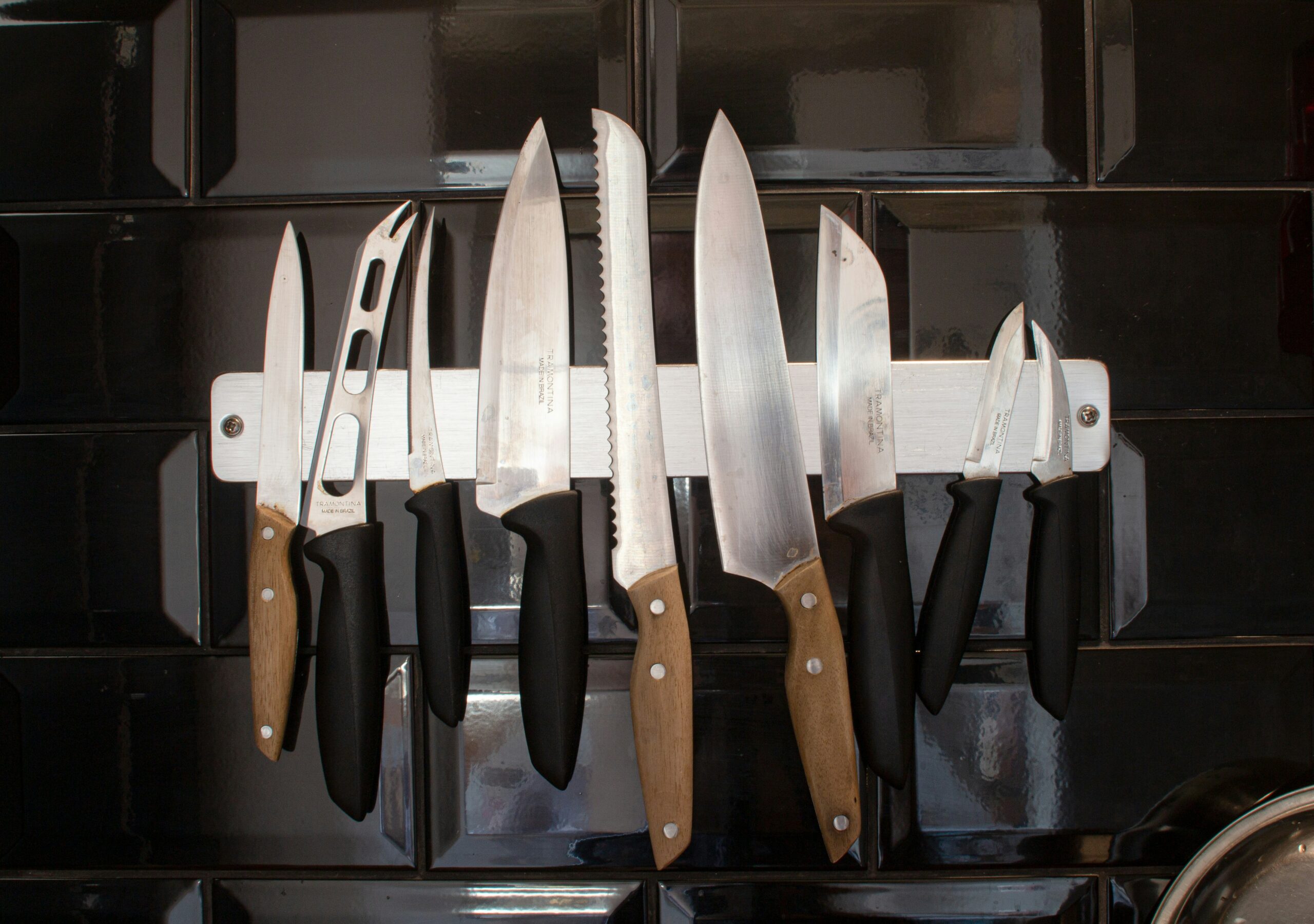
Admit it: You loathe cooking. It is easy to see why so many people hate preparing food, opting to overspend on pre-chopped and processed ingredients to save time and effort. As a society, our knife skills suck. It is truly scary to watch amateurs hack, stab and endanger their fingers with horrible knives that are never sharpened and thrown in a drawer.
If we spent as much time and less money on good knives and a class than our new iPhones, we’d be set for the rest of our ever-cookin’ lives.
I first learned how to use a knife from a chef at Yocom’s Studio Restaurant, now The Riverside. With the right set of knives and a little know-how, you too can achieve Jedi-like status and terrify family and friends by chopping, mincing, slicing and dicing without looking down at your fingers.
“I can lift my head up and look around the kitchen as I’m cutting, because I can feel where my knife is,” says John Percarpio, chef instructor at the Auguste Escoffier School of Culinary Arts in Boulder. “I’m never going to cut myself.”
Percarpio has worked in restaurant kitchens across the globe. According to him, they all have one thing in common: knives and first aid kits.
“I was 18 when I started working in a restaurant as a dishwasher. When there were no dishes, they’d make me do prep work. That’s when I picked up my first knife,” he says. “I never had many big wounds, because you learn not to do it wrong pretty quickly.”
Buy four good knives, change your life
If you’re going to cook well, quickly, safely and cheaply, you need good knives, according to Percarpio.
“You don’t have to spend crazy money. What’s necessary is that you get a good knife — high carbon steel, with a full tang — one piece of metal from point to handle,” he says.
A good chef’s knife can be found for $75-$125 at local stores like McGuckin Hardware and The Peppercorn, as well as online. Percarpio recommends knives made by Mercer, which are sold at the Escoffier.
Dozens of knives are available for all sorts of obscure cutting needs, but most cooks use only a handful.
No. 1: Chef’s knife
“The chef’s knife is the Ford F-150, the productive knife you use the most,” Percarpio says. “It has a curve to the blade to allow it to rock when you chop, an elliptical motion. You never tap the knife and lift it off the board.”
No. 2: Paring knife
This pint-sized blade is perfect for many small cutting tasks. It’s small stature gives maximum control, making it ideal for peeling fruits and vegetables.
No. 3: Serrated knife
The saw-like teeth make this knife ideal for slicing through tougher materials. Serrated knives typically come in two varieties: bread (usually longer with a blunt or rounded tip) and steak (typically smaller and ending in a point).
No. 4: Boning knife
Boning knives are characterized by their sharp tips and narrow blades. They are, as the name suggests, used for removing bones from meat. But they can also be handy for coring fruits.
“If I added one knife, it would be a boning knife,” Percarpio says. “It’s the Porsche. Boning knives are great for carving around corners. It bends around fruit, fish or meat.”
Zen and mastering your non-dominant hand
Once you have the right tools, you have to become one with the blade. You must master your non-dominant (and sometimes dumb) hand.
“Mastering the other hand holding what you’re cutting is the hardest part about knife skills. If you are right-handed, your left hand is your guide hand. The side of the knife bumps into your bended fingers,” he says. “If you use a guide hand, you feel where your knife is the whole time.”
When Percarpio interviewed young cooks for kitchen jobs, he says his first question was to ask them to cut up an onion. If the knife lifted above the guide hand of the board, it was sometimes the last question he asked.
“I’ve seen some really dangerous things,” he says, “like The Horseshoe — grabbing an onion with your hand wrapped around it cutting into it sideways.”
The edge of any blade should never cut toward any portion of your anatomy.
A dull knife is a dangerous knife
Percarpio does not approve of those “easy” handheld sharpening devices. “It’s a one-tool solution for a complicated problem, because each knife has a unique blade,” he says.
It helps if you understand the physics of blades to know how to sharpen them.
“If you look at a microscopic image of the blade on a straight edge knife, it would look serrated with small teeth,” he says. “As you cut all day, these teeth bend. When you use a steel to hone it, you straighten out the teeth again but eventually you have a dangerous, dull knife.”
A good in-person or online course will protect your investment in tools by showing how to use, sharpen, clean and store knives. Among the Boulder County options:
• Auguste Escoffier School of Culinary Arts: escoffier.edu/about/cooking-classes-boulder
• Food Lab: foodlabboulder.com
• Sur La Table: surlatable.com
• Longmont’s Journey Culinary: journeyculinary.com
John Lehndorff, who learned to chop in Boulder restaurant kitchens, will join Big Red F restaurateur Dave Query and host Nick Forster onstage at eTown Hall on Feb. 27 for a chat about Boulder dining. Tickets: bit.ly/eTownLehndorffBW.
